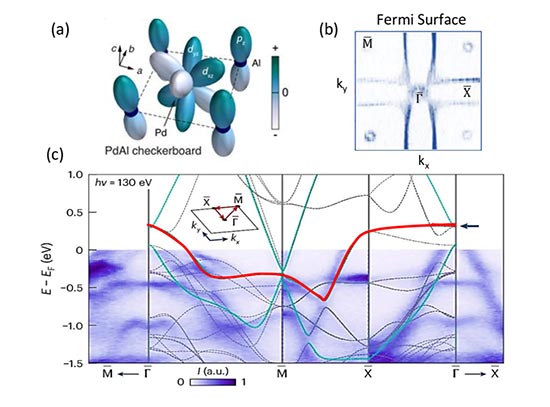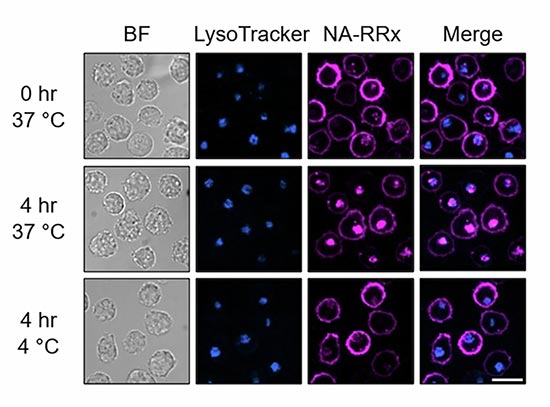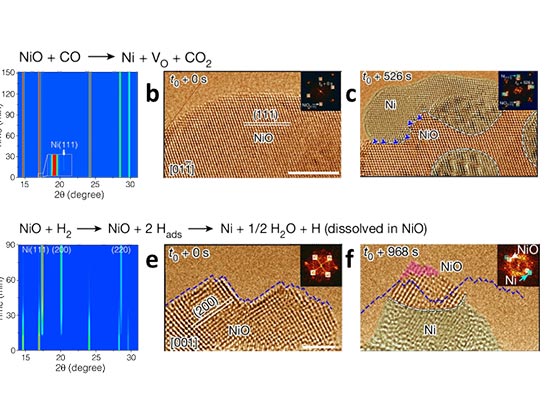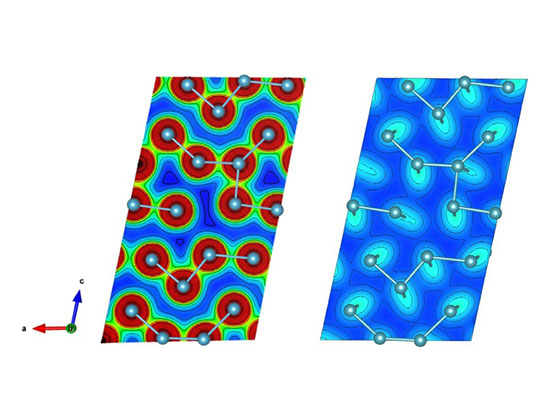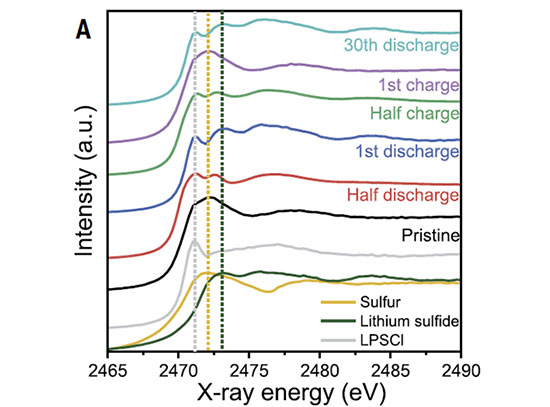Building Bridges for Reinforcing Polymers
Scientists reveal how a network of nanoparticles relates to the polymer's behavior, opening the pathway to designer polymers
September 30, 2021
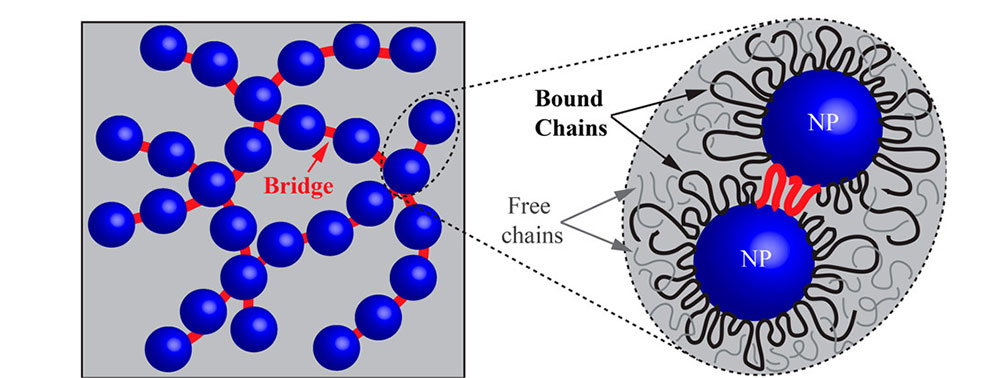 enlarge
enlarge
This image illustrates how the network-like structure of nanoparticles (NP) is formed via polymer bridges (red) within a nanocomposite (PNC) (left). The zoomed-in image (right) shows that these bridges are composed of polymer chains bound to NP surfaces, serving as effectively permanent bonds. Image credit: ACS Nano 15 (7), 11501-11513 (2021).
The Science
Scientists revealed how a network of nanoparticles tightly bonded by polymer bridges controls the mechanical properties of polymer nanocomposites (PNCs).
The Impact
Understanding the microscopic structural and dynamical features of the bridge network in polymers and how they relate to the polymer’s behavior, e.g., its toughness, can help guide polymer design for future applications, such as tires and wind turbine blades.
Summary
Scientists are interested in polymer nanocomposites (PNCs) because of their significantly improved material properties relative to native polymers. These rigid, yet flexible materials offer a wide variety of industrial applications such as car tires, sports equipment, water filtration, and solar cells. However, to design PNCs with the desired properties tailored to specific applications, researchers need to understand the origin of the property enhancement.
In this study, a team of scientists showed that nanoparticles within a model PNC form a springlike network connected by polymer chains. In collaboration with researchers at Oak Ridge National Laboratory, the team prepared the model PNC for this study. Once the sample was ready, the team used multiple research techniques to understand the structural and dynamical features of the network of bridges. Among these methods, the researchers used advanced x-ray characterization tools at the Coherent Hard X-ray Scattering (CHX) and the Complex Materials Scattering (CMS) beamlines to investigate the nature of the bonds. Both the CHX and CMS beamlines are part of an advanced suite of materials characterization tools at the National Synchrotron Light Source II (NSLS-II), a U. S. Department of Energy (DOE) Office of Science user facility located at DOE’s Brookhaven National Laboratory. The team also analyzed the overall mechanical properties of the sample using resources from the Center for Functional Nanomaterials, another DOE Office of Science user facility at Brookhaven National Laboratory. In addition to their experimental work, the team performed theoretical calculations based on a theory called dynamics mode-coupling theory to further understand the behavior of the material. This analysis agrees well with the experimental results.
According to the researchers, this study revealed crucial aspects of the key structural and dynamical features of a nanoparticle network connected by these bridges. They also identified some outstanding challenges for the theoretical understanding of these complex materials.
Download the research summary slide
Contact
Alexei P. Sokolov
Oak Ridge National Laboratory
sokolov@utk.edu
Kenneth S. Schweizer
University of Illinois
kschweiz@illinois.edu
Tadanori Koga
Stony Brook University
tadanori.koga@stonybrook.edu
Publications
Benjamin M. Yavitt, Daniel Salatto, Yuxing Zhou, Zhixing Huang, Maya Endoh, Lutz Wiegart, Vera Bocharova, Alexander E. Ribbe, Alexei P. Sokolov, Kenneth S. Schweizer, Tadanori Koga. Collective Nanoparticle Dynamics Associated with Bridging Network Formation in Model Polymer Nanocomposites. ACS Nano 15 (7), 11501-11513 (2021). DOI: 10.1021/acsnano.1c01283
Funding
The Donors of the American Chemical Society Petroleum Research Fund is acknowledged for support of this research (T.K.). T.K. also acknowledges partial financial support from Henkel Corporation and Brookhaven National Laboratory and National Science Foundation (NSF DGE 1922639). Y.Z., V.B., A.P.S., and K.S.S. acknowledge support for samples preparation, data analysis, and theory development by the U.S. Department of Energy, Office of Science, Basic Energy Sciences, Materials Sciences and Engineering Division. This work used resources from the Center for Functional Nanomaterials and the National Synchrotron Light Source II (Beamlines 11-ID and 11-BM), which are U.S. DOE Office of Science Facilities, at Brookhaven National Laboratory under contract no. DE- SC0012704.
2021-19272 | INT/EXT | Newsroom




